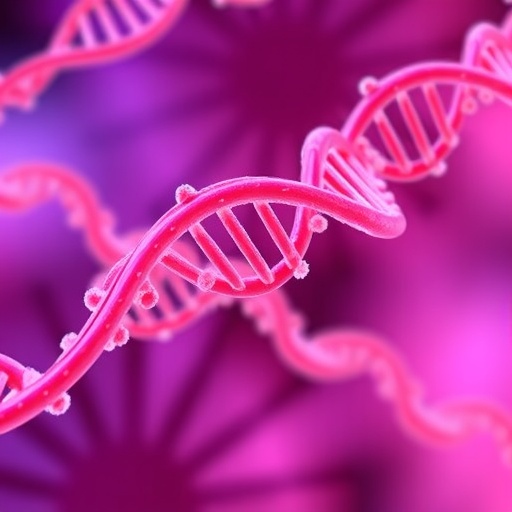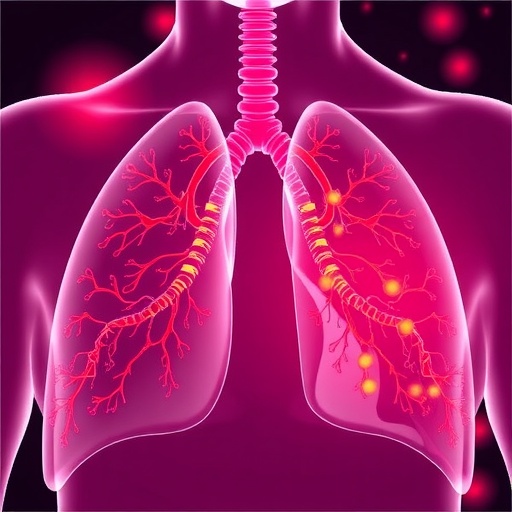In a groundbreaking study published in the esteemed journal BMC Cancer, researchers unveil the promising therapeutic potential of α-hederin in combating cervical cancer, a disease that continues to pose significant global health challenges despite advances in vaccination and screening. This study provides compelling evidence that α-hederin, a natural saponin compound, can effectively inhibit cervical cancer progression by inducing DNA damage-dependent cell cycle arrest and programmed cell death, offering a hopeful avenue for future cancer therapies.
Cervical cancer remains a major concern worldwide, primarily due to persistent rates of incidence notwithstanding the widespread implementation of human papillomavirus (HPV) vaccines and enhanced screening protocols. The limitations of current treatment modalities have driven the scientific community to explore novel compounds with potent anticancer properties. α-Hederin emerged as a candidate due to its previously documented bioactivity against various cancer cell types.
The research team employed a comprehensive set of in vitro and in vivo techniques to dissect the molecular mechanisms underlying α-hederin’s anticancer effect. Key assays such as CCK8 and EdU staining were utilized to evaluate cell viability and proliferation in cervical cancer cell lines SiHa and HeLa. These assays demonstrated a dose-dependent inhibition of cancer cell growth, signifying α-hederin’s cytotoxic impact. Further, flow cytometry analyses revealed enhanced apoptosis and cell cycle arrest, verifying that α-hederin not only suppresses tumor cell propagation but also actively induces cellular mechanisms leading to cell death.
Mechanistically, α-hederin was found to exert its inhibitory effect predominantly through perturbation of the cell cycle at the G2/M checkpoint. This blockade was mediated by downregulation of critical regulatory proteins CDK1 and Cyclin B, whose complex normally drives the cell’s progression into mitosis. The molecular cascade was further elucidated via transcriptome sequencing and bioinformatics, identifying key pathways influenced by α-hederin, including DNA replication and the p53 tumor suppressor pathway.
Significantly, the study highlights the role of DNA damage response signaling in α-hederin’s mechanism of action. Activation of ATM kinase signaling initiated phosphorylation events engaging checkpoint kinase 1 (CHK1), which in turn modulates the activity of CDC25 phosphatases, ultimately leading to inhibition of CDK1/Cyclin B complex function. Concurrently, activation of the p53-p21 axis reinforced the cell cycle arrest response, thereby preventing damaged cells from entering mitosis and propagating mutations.
Cellular stress responses were also evidenced by increased reactive oxygen species (ROS) production and altered mitochondrial membrane potential following α-hederin exposure. These phenomena are indicative of mitochondrial-mediated apoptosis pathways being engaged, adding another dimension to α-hederin’s ability to facilitate programmed cell death in malignant cervical cells.
To validate these in vitro findings, the researchers conducted in vivo experiments using nude mice xenograft models implanted with cervical cancer cells. Administration of α-hederin significantly curtailed tumor growth without noticeable toxicity, demonstrating its therapeutic potential and safety profile in a living organism. Metabolomic analyses of tumor tissues further confirmed metabolic disturbances consistent with the observed biological effects.
The study employed overexpression and inhibition experiments to pinpoint the involvement of CHK1 and DNA damage repair pathways in α-hederin-mediated cytotoxicity, solidifying the integral role of DNA damage-dependent checkpoints in restricting tumor proliferation. The use of antioxidants like N-acetyl cysteine (NAC) helped delineate the oxidative stress component, affirming that ROS generation is a critical trigger in this molecular chain.
Overall, this multifaceted research not only broadens the understanding of α-hederin as an anticancer agent but also sheds light on the intricate network of molecular processes governing cell cycle regulation and apoptosis in cervical cancer cells. The implications extend to the potential integration of α-hederin into combinatorial treatment strategies, possibly enhancing the efficacy and specificity of existing therapies while minimizing adverse effects.
Given the prevalence and mortality associated with cervical cancer, the identification of novel compounds such as α-hederin capable of exploiting DNA damage response pathways offers a much-needed breakthrough. Future clinical trials are warranted to verify the translational applicability of these findings and to optimize dosage and delivery mechanisms for human use.
The promising results add to a growing body of research emphasizing the therapeutic merits of natural compounds with multi-targeted actions. This study exemplifies the marriage of traditional bioactive molecules with modern molecular biology techniques, paving the way for innovative cancer treatments.
In conclusion, α-hederin emerges as a potent inhibitor of cervical cancer progression through mechanisms involving DNA damage-induced cell cycle blockade and apoptosis. Its multi-pronged effect on critical molecular pathways underscores its potential to become a valuable asset in oncology, warranting further investigation and development.
Subject of Research: Exploration of α-hederin’s therapeutic effects on cervical cancer, focusing on its mechanisms involving DNA damage-dependent cell cycle arrest and apoptosis induction.
Article Title: α-hederin inhibits cervical cancer progression by inducing DNA damage-dependent cell cycle blockade and apoptosis
Article References:
Song, Y., Qin, H., Huang, S. et al. α-hederin inhibits cervical cancer progression by inducing DNA damage-dependent cell cycle blockade and apoptosis. BMC Cancer 25, 1503 (2025). https://doi.org/10.1186/s12885-025-14920-4
Image Credits: Scienmag.com
DOI: https://doi.org/10.1186/s12885-025-14920-4
Tags: anticancer bioactivity of saponinsBMC Cancer publication on cancer researchcancer cell cycle arrest mechanismsDNA damage in cancer treatmentHeLa and SiHa cell linesHPV vaccine limitationsin vitro studies on α-hederininnovative cancer treatment approachesmolecular mechanisms of α-hederinnatural saponin compoundsprogrammed cell death in cervical cancerα-Hederin cervical cancer therapy





